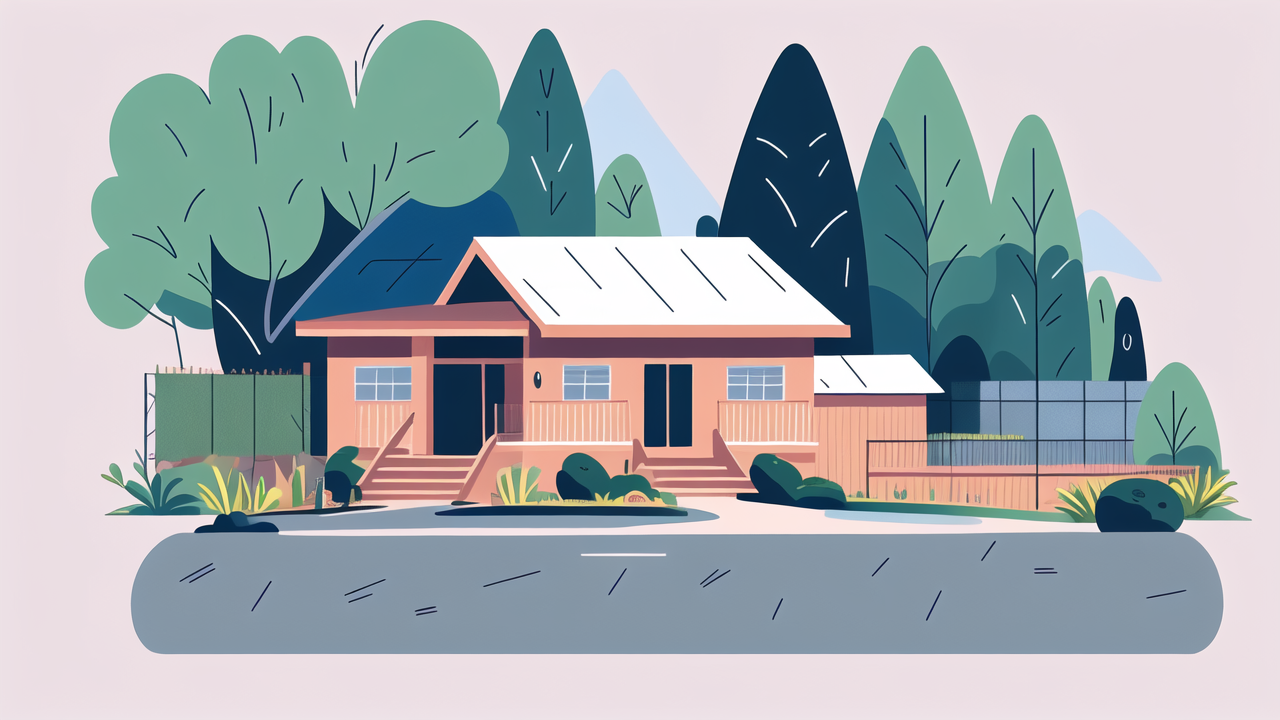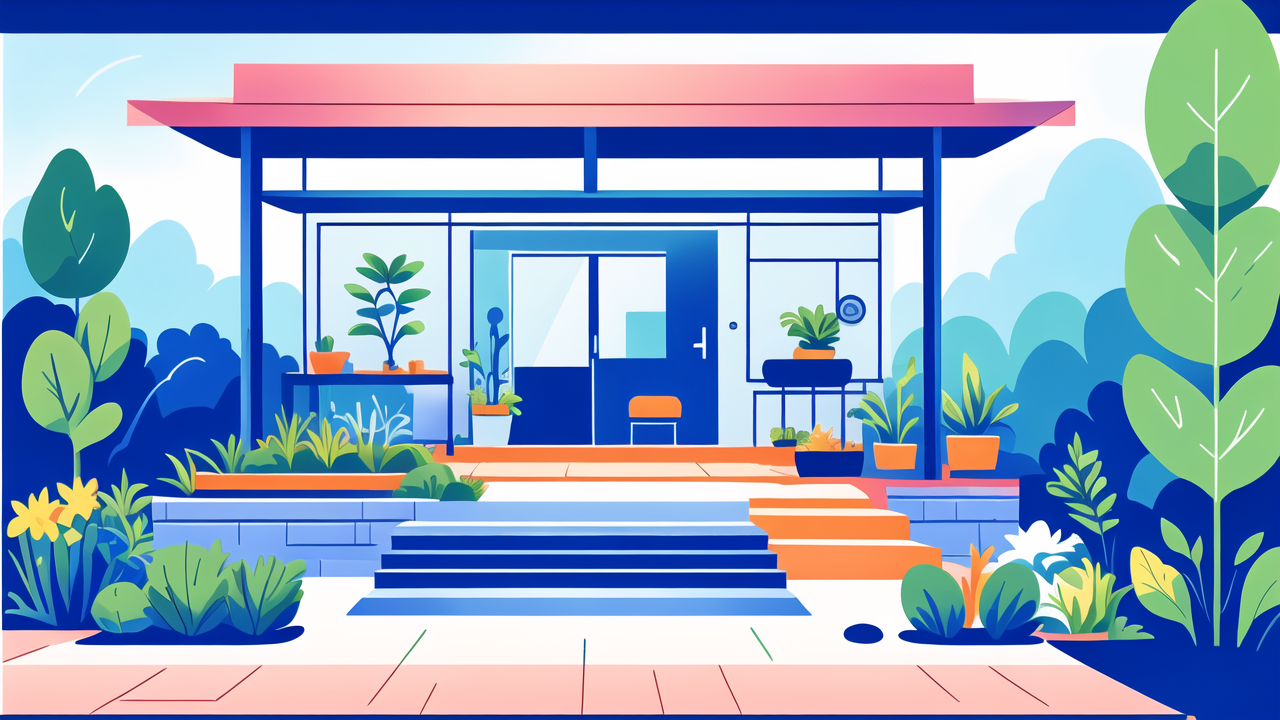Why a Garden Fence is Essential for Your Home
Understanding the Role of Garden Fences in Landscaping
Garden fences play a vital role in landscaping. They define boundaries and create structure in your yard. A fence can provide privacy and security for your outdoor space. It can protect your garden from wildlife and pets. Fences act as windbreaks, shielding delicate plants from strong gusts. They can serve as a backdrop for climbing plants, adding vertical interest. A well-chosen fence can create distinct zones within your yard. It can separate your vegetable garden from your relaxation area. Fences can guide foot traffic and control access to certain parts of your garden. They can also enhance the overall design of your outdoor space. A fence can tie together different elements of your landscape. It's not just a barrier, but a key part of your garden's look and feel.

Benefits of Garden Fences to Property Value and Aesthetics
A garden fence can boost your property's value and appeal. It enhances curb appeal, making your home more attractive. A well-designed fence can create a cohesive look in your landscape. It can tie together different elements of your garden design. Fences can hide unsightly views or utility areas, improving your yard's overall look. They provide a sense of enclosure, making your outdoor space feel more inviting. A stylish fence can become a focal point, adding character to your garden. By defining your property lines, fences can make your lot appear larger. They can also make your yard look more organized and well-maintained. A fence can create a backdrop for your plants and garden features. It can frame views and create interesting perspectives in your garden. A thoughtful garden fence is an investment that enhances both beauty and value.
The Best Types of Garden Fences for Different Environments
Analyzing Materials: From Wood to Metal
Choosing the right material for your garden fence is crucial. Here's a breakdown of common options:

- Wood: Classic and versatile, suits most garden styles
- Metal: Durable and low-maintenance, ideal for modern designs
- Vinyl: Cost-effective and easy to clean, great for family yards
- Bamboo: Eco-friendly and exotic, perfect for tropical themes
- Stone: Long-lasting and natural-looking, blends with rustic landscapes
Each material has its pros and cons. Wood offers warmth but needs regular care. Metal is sturdy but can rust over time. Vinyl is practical but may lack character. Bamboo is unique but may not suit all climates. Stone is timeless but can be expensive. Consider your environment when choosing. Think about local weather conditions and how they might affect the material. Also, consider your budget and maintenance preferences. The right material will complement your garden and stand up to local conditions. It should also fit with your personal style and the overall look of your home.
Designing for Functionality and Aesthetics
When designing your garden fence, balance function with beauty. Think about the main purpose of your fence. Is it for privacy, security, or decoration? This will guide your design choices. For privacy, choose taller, solid fences. For security, opt for sturdy materials with secure gate locks. For decoration, explore ornamental designs or lattice tops. Consider how the fence will interact with your existing landscape. Will it frame certain views or block unwanted ones? Choose a style that matches your home's architecture. Think about the visual weight of the fence. A heavy design might overwhelm a small space. A light one may look out of place in a large yard. Don't forget practical aspects like upkeep needs and local building rules. The height and style of your fence should complement your home and garden. It should enhance, not detract from, your outdoor space.
Durability and Maintenance: What to Consider
Durability and maintenance are key factors in choosing a garden fence. Consider these points:
- Weather resistance: Pick materials that can handle your local climate
- Lifespan: Some materials last longer but may cost more upfront
- Maintenance needs: Some fences need regular painting or staining
- Pest resistance: Certain materials better resist insects and rot
- Repair ease: Some fences are easier to fix if damaged
Wood fences may need regular sealing or painting. Metal fences might need rust prevention treatments. Vinyl fences are low-maintenance but may fade over time. Stone fences are durable but can be costly to repair if damaged. Think about your time and budget for upkeep. A low-maintenance option might be worth the higher upfront cost if you prefer less work. Remember, proper care can greatly extend the life of any fence type. Regular inspections and prompt repairs can prevent small issues from becoming big problems. Choose a fence that fits your lifestyle and maintenance preferences.
Innovative Garden Fence Ideas to Elevate Your Space
Incorporating Garden Fences into Your Overall Landscape Design
Integrating your garden fence into your overall landscape design is key. Start by considering your garden's style. Is it formal, cottage-like, or modern? Your fence should match this theme. Use your fence as a backdrop for plants. Train climbing roses or clematis to grow along it for a romantic look. Create contrast by pairing a dark fence with light-colored flowers. Use the fence to frame views or create focal points in your garden. Think about how the fence interacts with other elements like patios or paths. You might paint your fence to match your house trim for a unified look. Don't forget about lighting. Adding subtle fence lights can create a magical nighttime atmosphere. Consider how your fence will look in different seasons. Plan for year-round interest with evergreen plants or decorative elements.

Customization: Personalizing Your Garden Fence
Personalizing your garden fence adds character and makes your space unique. Here are some ideas:
- Paint: Choose a color that complements your home and garden
- Decorative elements: Add ornamental post caps or fence toppers
- Planters: Hang flower boxes or attach small planters to the fence
- Art: Incorporate mosaic tiles or hang outdoor-safe artwork
- Lighting: String fairy lights or install solar-powered fence lights
Consider adding a decorative gate that stands out from the rest of the fence. You could create a pattern by alternating fence panel styles. For a whimsical touch, cut out shapes in wooden fence panels. Use stencils to paint patterns or quotes on your fence. Add mirrors to create the illusion of more space in a small garden. Incorporate found objects or repurposed items for a unique, eco-friendly touch. Remember, personalization should enhance, not overwhelm, your garden's overall design. Choose elements that reflect your personality while complementing your outdoor space.
Smart Garden Fences: Integrating Technology and Sustainability
Smart garden fences blend technology with sustainability. Solar-powered fence lights provide eco-friendly lighting. Some fences now have built-in irrigation systems for nearby plants. Weather-resistant speakers can be added for outdoor entertainment. Consider fences made from recycled materials for a green choice. Living fences, like hedges or bamboo, offer a natural alternative to traditional fences. Some high-tech options include motion sensors for security or automated gates for ease. Vertical gardening systems can be built into fence designs, maximizing growing space. Smart locks can be added to gates for keyless entry. You could incorporate small solar panels to power garden tools or charge devices. Some fences now come with built-in weather stations to help with plant care. While these features can enhance function, balance them with your garden's overall look. Choose smart features that truly add value to your outdoor living experience.
